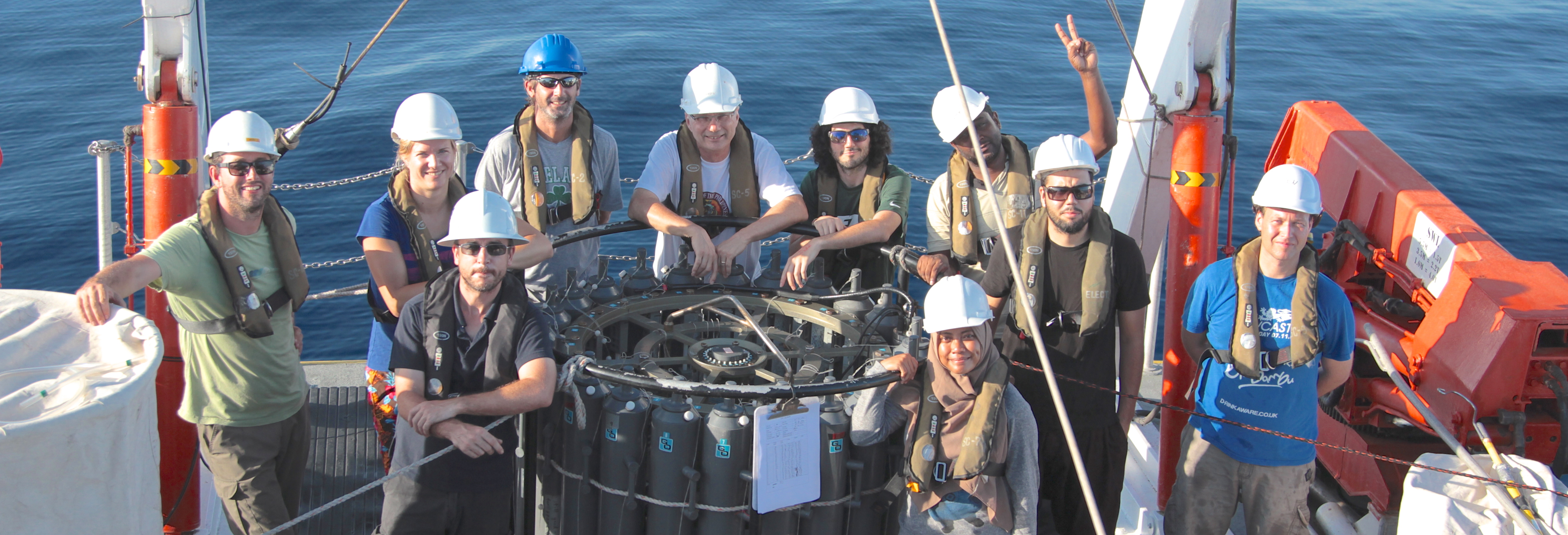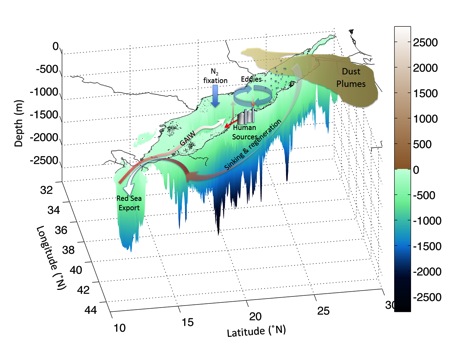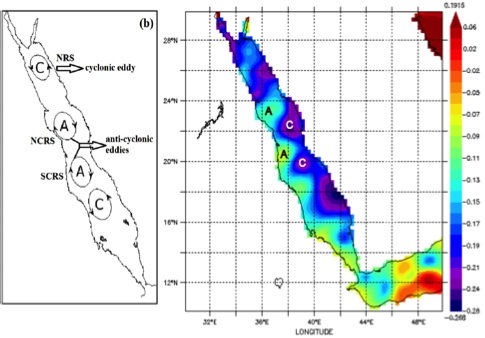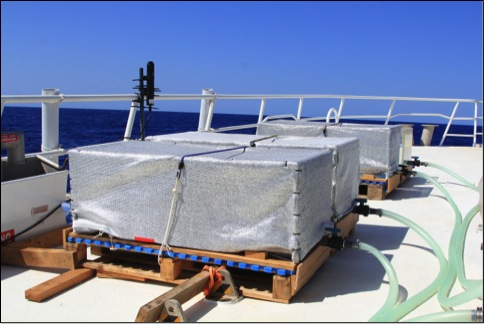Details

Nutrient cycling cruise participants from KAUST, King Abdulaziz University and the University of Southern California (2015)
In the framework of the Red Sea Research Center project “Nutrient cycling in the Red Sea”, a series of research cruises provide the basis to assess the ecohydrography and biogeochemistry of the north-central and south-central Red Sea at various
spatial and temporal scales. It is assumed that ecohydrographic gradients and nutrient sources for plankton organisms in the oligotrophic Red Sea are constrained by atmospheric, oceanographic, and biological processes (Fig. 1 below).
The primary objective of the present study is to provide a holistic understanding of the nutrient fluxes and limitations thereof in the Red Sea. In particular, we investigate how nutrient fluxes influence plankton diversity and the trophodynamics of the
pelagic food web and how they relate to physical-oceanographic features such as eddies, eddy-induced upwelling, and the inflow of water masses from the Indian Ocean and the Gulf of Aden.
Due to the interdisciplinary nature of the “Nutrient cycling in the Red Sea” project, this project interfaces with other RSRC projects:
- Modeling, understanding and predicting the Red Sea physics and biology
- The role of eddies in physics and biology of the Red Sea
- Interactions between natural and anthropogenic processes in ecosystem functioning
- Optics and Remote Sensing of the Red Sea
- Dust deposition effects on the Red Sea
In relation to the encountered ecohydrographic gradients in the central Red Sea, we elucidate the contribution of various sources of nutrients to the productivity of the system and their mechanisms of transport. Sources and processes include the Gulf
of Aden Intermediate Water, vertical exchange processes, mixing, eddies, upwelling/downwelling, atmospheric deposition, and biological processes.
For the first time in the Red Sea, process-oriented studies will be conducted onboard research vessels to generate fundamental and original primary productivity, nutrient limitation, and carbon and nitrogen fixation rate measurements. Within the project
we also establish a bio-optical characterization of the Red Sea and describe the implications for ocean color remote sensing.
The project pictures seasonal changes of nutrient concentrations, stoichiometry, and primary productivity in the Red Sea and determine which nutrients (N, P, Si) are likely to be most limiting within the Red Sea.
After high resolution surveys of the sampling area between 24°30´N and 19°00´N by means of an undulating CTD (Scanfish), backed up by autonomous glider deployments and remote sensing information, the sampling sites are determined
and in situ process studies and sample collections commence in relation to the following key objectives:
- What are the rates of primary production and nitrogen fixation in the Red Sea and what diazotrophs are primarily responsible for fixation?
- What are the abundances and biodiversity of phytoplankton (diatoms, dinoflagellates, Trichodesmium sp.), as well as Prochlorococcus, Synechococcus,pico/nanoeukaryotes, and total bacteria along with the information of high and low
nucleic acid groups (HNA and LNA, respectively) and expression of genes indicating the presence of diazotrophis (e.g. nifH, nifD, nifK, hetR, anf, vnf; link to Stingl group)?
- What are the abundances and biodiversity of zooplankton, and how are they distributed over depths, and by what means are nutrient sources for and relative trophic position of zooplankton related to ecohydrographic features?
- By which means are physical-oceanographic controls responsible for governing the ecohydrographic patterns?
Fig. 1 Conceptual model of the ecohydrography of the Red Sea showing key oceanographic features and conjectured macronutrient sources.

Fig. 2 Schematic of eddies (left panel) in the Red Sea from (Raitsos et al., 2013). Right hand panel shows AVISO Sea Level Anomaly on October 13, 2014.

Fig.3 Scanfish track (white line) and sampling sites overlaid on AVISO map from October 13, 2014.

Fig. 4 Incubation tanks with constant seawater supply for macronutrient uptake rate measurements on RV Thuwal.






